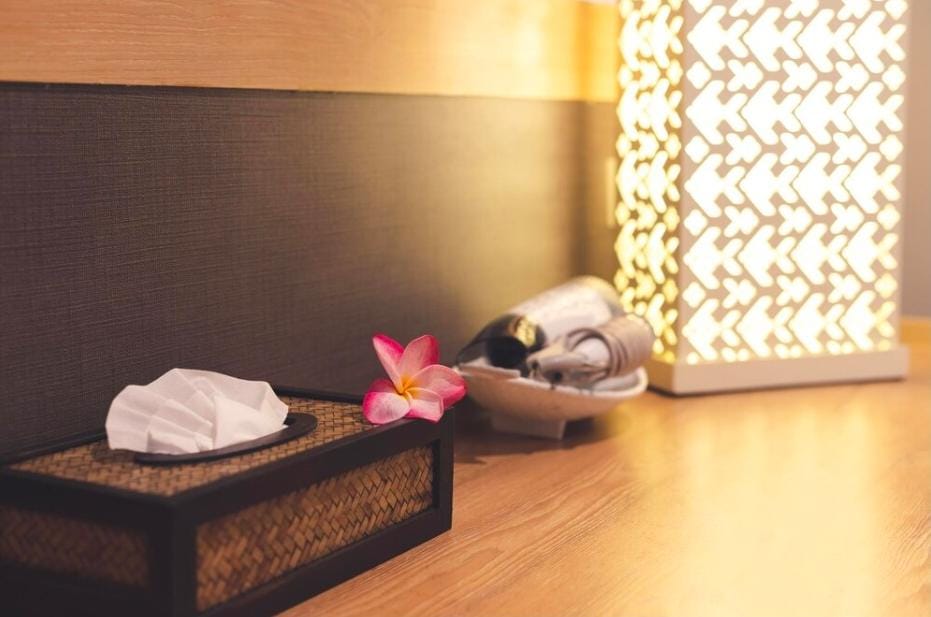Factors That Determine Business Trip Massage Prices

Business travelers often seek massage services to unwind after long flights, meetings, or conferences. These massages not only relieve tension but also enhance focus and productivity during the trip. However, one noticeable aspect of this convenience is the significant variation in pricing depending on numerous influencing factors like best sports betting app Canada. Understanding these elements helps travelers make informed decisions while balancing quality and budget.
The cost of a business trip massage depends on far more than the basic service alone. From geographical influences to service customization, every detail contributes to the final rate. Each factor, whether it is the experience of the therapist, the type of massage selected, or the timing of the appointment, affects the price differently. Examining these determinants provides insight into how value is assigned within the massage industry and helps professionals plan their expenses accordingly.
Location
Location is one of the main factors affecting business trip massage prices. Services in large cities, luxury hotels, or business hubs usually cost more than those in smaller or suburban areas. The higher prices come from increased operating expenses such as rent, wages, and greater demand for wellness services. The busier the area, the higher the massage rates tend to be.
The venue also influences the overall cost. Hotel-based massages are often more expensive because of the convenience and privacy they offer guests. Mobile massage services that travel to clients may add fees for transportation and setup. Travelers should weigh both location and logistics when evaluating total costs.
Type of Massage
The type of massage selected also directly influences the price. Simple relaxation massages are typically more affordable than specialized techniques such as 스웨디시, deep tissue, sports, or Thai massages. This difference arises from the complexity of each method and the training required to deliver it effectively. Certain modalities, like aromatherapy or hot stone massages, may include additional materials or essential oils, further increasing the total expense.
Furthermore, therapeutic massages designed for injury recovery or muscle rehabilitation often require licensed professionals with specific certifications. These advanced skills justify higher rates because of the therapist’s expertise and liability considerations. In short, the choice of massage determines not only the level of relaxation achieved but also the amount reflected on the final bill.
Duration of Session
Session length is another major pricing factor. Most business trip massages are offered in set time blocks such as 30, 60, or 90 minutes. Naturally, longer sessions cost more because they involve more time, energy, and effort from the therapist. However, many services apply a discounted rate per minute for extended bookings, making longer sessions more cost-effective overall.
Additionally, the purpose of the massage often dictates the appropriate duration. A brief session might suffice for travelers seeking a quick energy boost between meetings, while those recovering from long flights or intense workdays may prefer a full-hour treatment. Ultimately, understanding the relationship between time and value allows travelers to select a duration that best matches both their schedule and their recovery needs.
Personalization Level
Personalization is an increasingly popular aspect of massage services, especially for business professionals with specific preferences or physical requirements. Tailoring a session to meet individual needs, such as adjusting pressure, incorporating aromatherapy, or combining multiple techniques, often leads to higher prices. This is because customized experiences require additional planning, consultation time, and possibly unique products.
Some providers even offer personalized wellness packages that include pre-session evaluations or post-massage recommendations for posture and stretching. These premium services create a holistic approach to well-being, making them more expensive but also more beneficial. The more detailed and individualized the service becomes, the more value and cost it carries.
Therapist Experience
The experience level of the therapist plays a crucial role in determining 출장마사지 prices. Seasoned therapists with years of training and professional recognition command higher rates because of their expertise and reliability. Clients paying a premium expect not only skillful techniques but also consistency, discretion, and a deeper understanding of body mechanics.
In contrast, newer or less-experienced practitioners may offer lower prices to attract clients and gain exposure. While these sessions can still be satisfying, the quality may vary. For business travelers seeking assured excellence and professionalism, investing in a therapist with proven credentials and positive reviews is often worth the added cost.
Service Reputation
The reputation of the massage provider or company significantly impacts pricing. Established wellness brands and spa chains often charge more because of their credibility, customer trust, and service guarantees. These providers invest in staff training, quality control, and customer experience, all of which justify their premium pricing.
Conversely, lesser-known or newer service providers may keep rates lower to compete in the market. However, this can involve greater risk, as the consistency and professionalism might not match those of reputable establishments. Reading reviews and seeking recommendations before booking ensures a better balance between cost and quality.
Time of Appointment
Timing also affects massage rates, particularly for business trip schedules. Appointments booked during late-night hours, weekends, or public holidays usually carry surcharges because they fall outside standard working times. Therapists offering round-the-clock availability charge more for convenience and flexibility, which are especially valuable for international travelers dealing with jet lag.
Moreover, last-minute bookings may come with higher prices due to limited availability or priority service fees. Planning ahead allows clients to secure appointments at regular rates while ensuring that their preferred time slots remain open. Proper scheduling not only saves money but also enhances the overall relaxation experience.
Booking Method
How the massage is booked also influences its cost. Online platforms and mobile apps often offer discounts or loyalty rewards for digital reservations. In contrast, bookings made directly through hotels or concierge services may include additional charges because of handling fees or service commissions. Some luxury hotels integrate the cost into room packages, giving the impression of exclusivity but often at a higher total expense.
Group or corporate bookings can sometimes yield discounted rates, especially if arranged in advance. By comparing multiple booking channels, such as independent websites, in-person reservations, or travel packages, business travelers can find the most cost-effective option without compromising service quality.
Season and Demand
Seasonal variations and overall demand levels also determine pricing. During peak travel periods, such as international conferences or holiday seasons, massage rates often rise due to limited therapist availability and increased demand from tourists and executives alike. Conversely, prices may drop during off-peak months when service providers seek to attract more clients.
Weather and regional tourism trends also influence these fluctuations. For example, destinations popular during winter retreats may see higher wellness service rates at that time of year. Understanding these seasonal dynamics allows travelers to anticipate potential price changes and plan accordingly.
Equipment Used
The quality and sophistication of the equipment used during the session also affect cost. Portable massage tables, ergonomic chairs, premium oils, and sterilized linens all add to the service value. Some luxury setups even include heated tables, aromatherapy diffusers, or sound therapy systems to enhance relaxation, thereby justifying higher fees.
In mobile business trip massages, therapists must transport and maintain their equipment, which contributes to the total charge. High-end materials ensure hygiene and comfort, creating a more professional experience that aligns with the expectations of corporate clients. Therefore, investing in quality equipment not only benefits the therapist but also elevates the client’s experience.
Local Taxes
Local taxation policies can subtly influence final massage prices. Depending on the country or city, massage services may be subject to value-added tax (VAT), service tax, or tourism-related levies. These additional costs are usually included in the advertised price, though some providers may itemize them separately.
In business districts or upscale hotel zones, taxes and operational licenses tend to be higher, indirectly driving up service costs. Travelers should review their receipts carefully to understand what portion of the price reflects taxation rather than service quality. Awareness of these hidden costs prevents confusion and aids in accurate expense reporting for corporate reimbursement.
Conclusion
The pricing of business trip massages is shaped by a wide array of factors, each contributing to the overall service value. From the location and type of massage to the therapist’s experience and local tax regulations, no single element defines the cost alone. Instead, these factors work collectively to reflect the level of comfort, professionalism, and personalization offered.
For business travelers, understanding these determinants ensures smarter spending and better experiences. By balancing quality, convenience, and affordability, they can choose services that meet both their physical needs and corporate travel budgets. Ultimately, a well-planned massage session is not just an indulgence; it is an investment in maintaining peak performance throughout the journey.
